Interceptor-strike fighter competition

1932
The Fabellan Royal Airforce(RFAF) sent a message to the aircraft companies Cormack and Bragaut. Both companies were given the requirements
1. Uses the Poyasakai Kaze-01-mod1 V12 engine.
2. Climbs to 4,000m in less than 3.5 Minutes
3. Protection of the pilot
4. Ability to attack ground targets.
5. Ability to carry 400+L of fuel
The Bragaut Company came up with the F.5 Mogami and the Cormack Company came up with the F.6 belfast. Belfast was significantly better than the Mogami. In 1936 when the two planes were tested.

Testing and result
Testing started in Summer of 1936
1. Belfast had 3×23mm cannons and 2 13×mm MGsvs Mogami's single 23mm cannon and 2×13mm machine guns
2. Belfast traveled at (630kph,391mph) was significantly faster than Mogami's (550kph, 341mph) at 6,000m/19.6kft.
3. Mogami can turn 360 degrees in less than 21S compared to Belfast's appalling 33+S turn time at the same altitude, and both at maximum fuel capacity.
4. The Mogami also has a significantly shorter take-off distance off x compared to Belfast's 800+m(870+yards) take off run
5. Belfast however takes the cake, the biscuits and quite probably the container in terms of external weight. Belfast can carry over 750kg of external weapons on a single wing and 1,000kg bombs on the center mount. Mogami can only carry 500kg on both wings using hard points.
6. Upon finishing the tests, both pilots agreed that Belfast was more comfortable as her cockpit was larger than Mogami's.
For the RFAF the choice was undeniably Belfast. Belfast had significantly better firepower and significantly faster in all altitudes.

Mogami tails Belfast
A new purpose
The Mogami now a failed attack interceptor. The RFAF recognized high rate of climb and the agility to be a good qualities for an strike-interceptor, however they chose the Belfast as it had superior firepower and significantly higher speed.
The Mogami was not destined to be a scrapped project. The Karyans asked if they could purchase one of the prototypes. The Fabellans then sold one of the prototypes to the Karyan Union. The Karyans tested the aircraft and the Karyans were highly impressed with Mogami's performance, they were most impressed with the low stall speed(120kph) and the large amount of ammo for the 23mm cannon(200+).
The Royal Fabellan Navy too was looking to add interceptors on the fleet carriers. Mogami can take-off on the latest Fabellan fleet carriers. Mogami was relatively small, had a large amount of ammo for the 23mm and 13mm guns, light and highly maneuverable. So the RFN sent a message to Bragaut, they told Bragaut to add an arrestor hook on the Mogami and they would start tests if Mogami would be a good carrier based interceptor.
In the autumn of 1936 the Bragaut company presented the Mogami-II-CV. The newer model was able to take off and land on all RFN fleet carriers. The Mogami was then adopted by the Royal Fabellan Navy Air Service by spring of 1937. Furthermore, Mogami was significantly simpler to operate because of the fewer components.

This Aircraft
This is the F.5-III Variant. The first batch reached RFNAS units in January of 1942. The RFN San Lorenzo Ruiz was one of the first to receive the newer models. The newer models were fitted with a better cooling system, slightly better self-sealing fuel tanks and lighter 13mm machine guns. This is the aircraft of the Fabellan ace Liebling Petrovich.
Liebling Petrovich
Aboard the San Lorenzo Ruiz was the ace Liebling Petrovich. Petrovich was one of the best pilots in the RFNAS. He was considered to be one of the best pilots because of his ability to coordinate the units that he was given charge of. He joined the RFNAS in December of 1939 and gained his first kills a few days after he was aboard the San Lorenzo Ruiz. However Liebling Petrovich's auspicious career would end in July of 1942, when the RFN San Lorenzo Luiz was first attacked by a group of Baphometian attackers.

The sinking of RFN San Lorenzo Ruiz
In the cloudy morning of July 1942, the San Lorenzo Ruiz was steaming along with her escorts when three of Baphometian HSI.7s attackers were detected to be approaching.
Liebling's fighter group was quickly launched to intercept the pair of torpedo bombers. Upon successfully shooting down both bombers Liebling's squadron was then landing on the San Lorenzo Luiz a formation of five HSI.7 carrying 750Kg(1500lb) AP bombs, these bombs could easily punch through San Lorenzo Ruiz's 100mm/4inch of armored steel flight deck. Liebling was the last to land until they were told to abort their landing and threaten the dive bombers away so the SLR could launch a newer batch of fighters. Unfortunately for the SLR the small formation had a flight of dive bombers above them, and when the interceptors were landing on the SLR, the other flight of dive bombers made their move.

A picture taken 12 hours before her loss.
Diving from 4,500m directly above the SLR, the dive bombers were diving fast, when they pop out of cloud cover, the AA gunners aboard SLR attempted to shoot it down but it was too late, as Liebling was about to land, two 750kg AP bombs slammed on the bow of the ship, punching straight through the armored flight deck and detonating in the bomb and torpedo magazines. The explosion of the magazine caused the entire ship to break in half, the other bomb meanwhile ended up inside the machinery spaces, the bomb detonated and disable the entire ship. Note that these events only occurred in less than 4 seconds between the two critical strikes. The resulting explosion damaged the glass of the two destroyers that were escorting her. Within a couple of minutes, one of the most advanced Fabellan ships to ever set sail in the oceans of Termacael vanished beneath the waves.

San Lorenzo Ruiz's magazine detonated.
Extra controls and warnings
VTOL Down, Flaps
VTOL less than -.875, Arrestor gear
Landing Gear down, port/star lights
Stalling while climbing vertically may result in a flat spin.
Specifications
General Characteristics
- Predecessor Bragaut F.5 Mogami Interceptor (Liebling Petrovich)
- Created On Windows
- Wingspan 42.9ft (13.1m)
- Length 35.0ft (10.7m)
- Height 13.7ft (4.2m)
- Empty Weight 9,242lbs (4,192kg)
- Loaded Weight 9,969lbs (4,522kg)
Performance
- Horse Power/Weight Ratio 0.141
- Wing Loading 26.7lbs/ft2 (130.5kg/m2)
- Wing Area 373.1ft2 (34.7m2)
- Drag Points 2897
Parts
- Number of Parts 406
- Control Surfaces 6
- Performance Cost 1,328

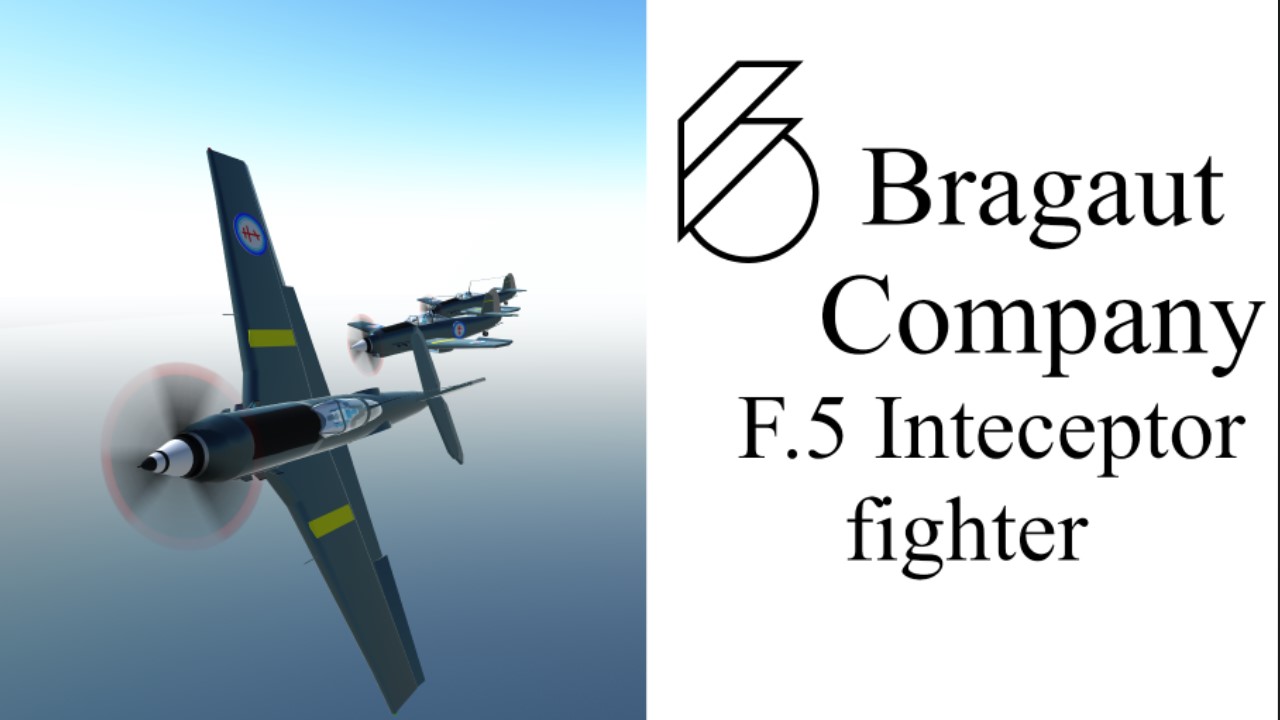
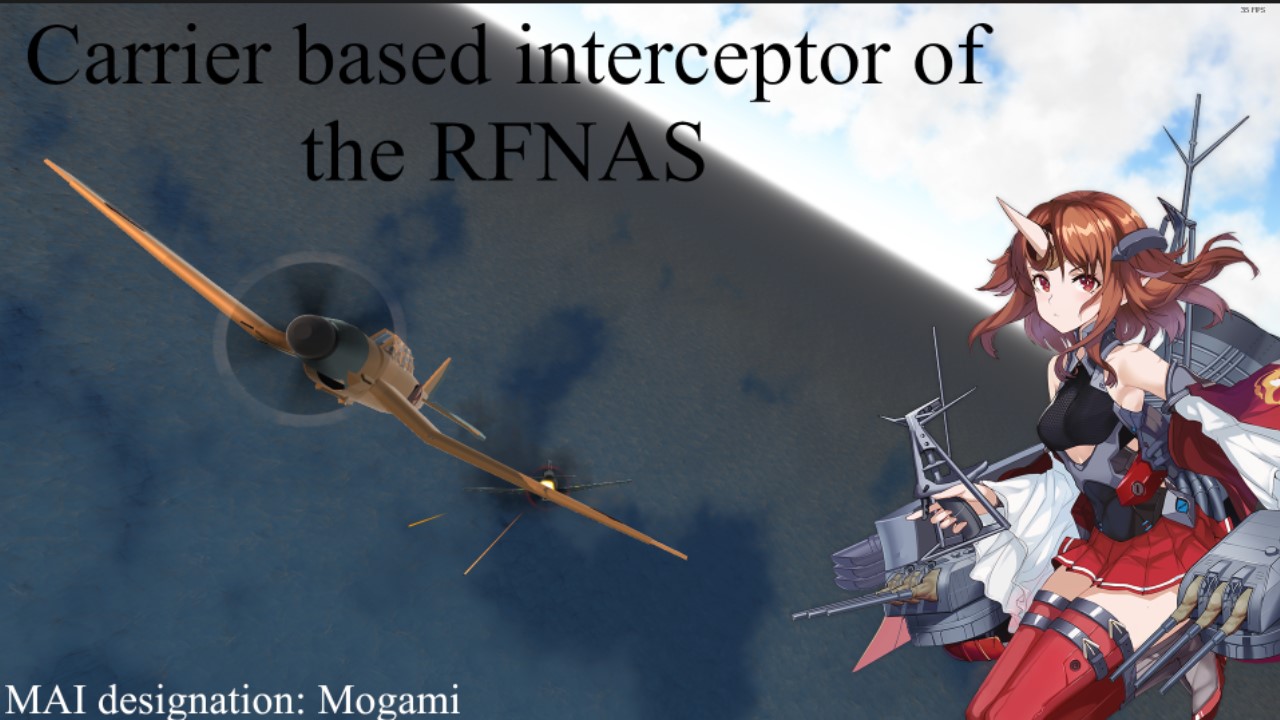
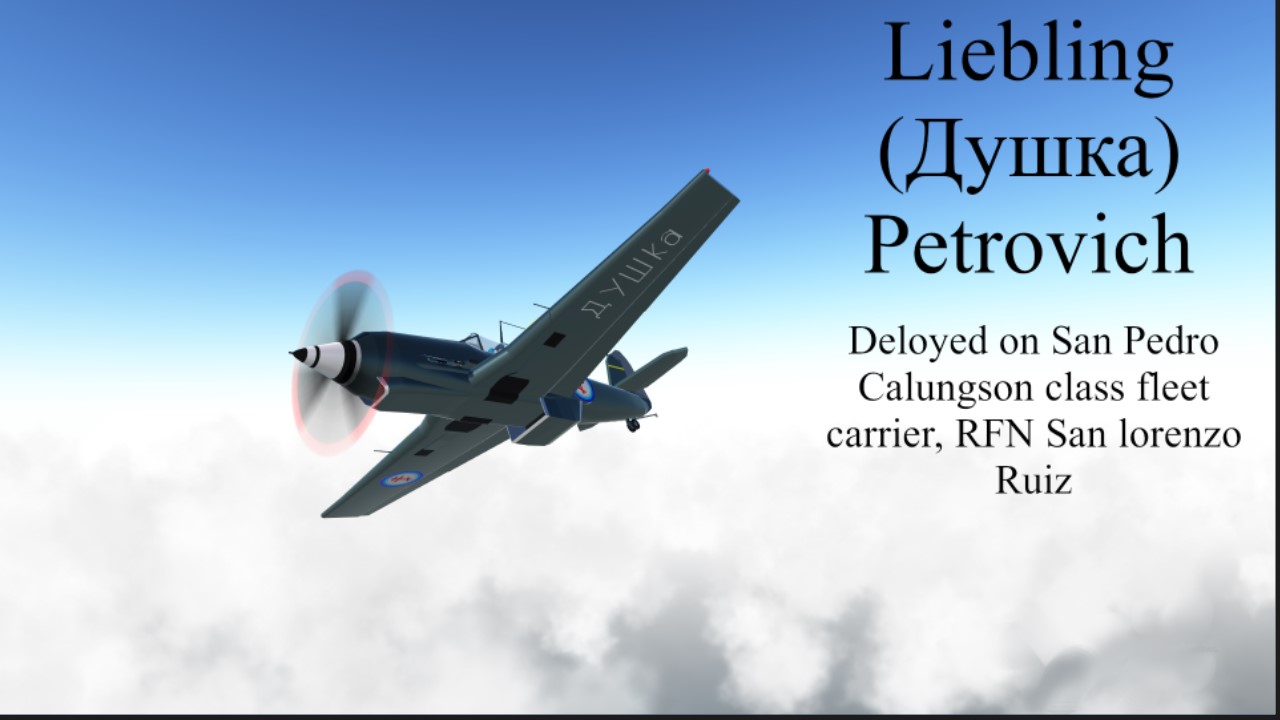
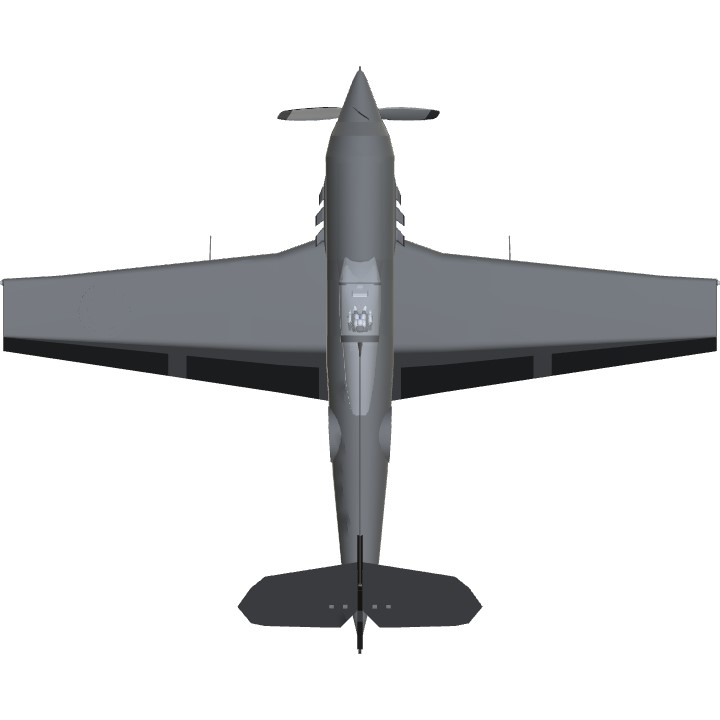
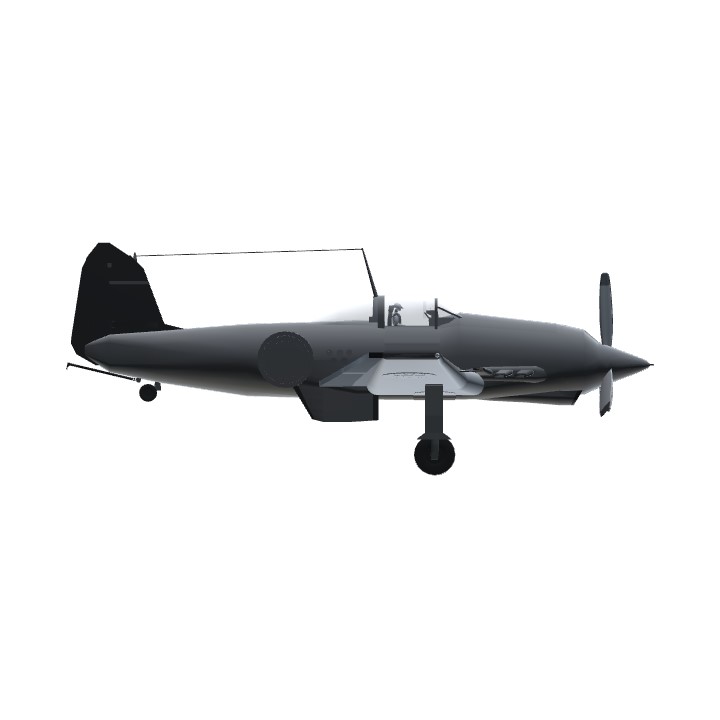
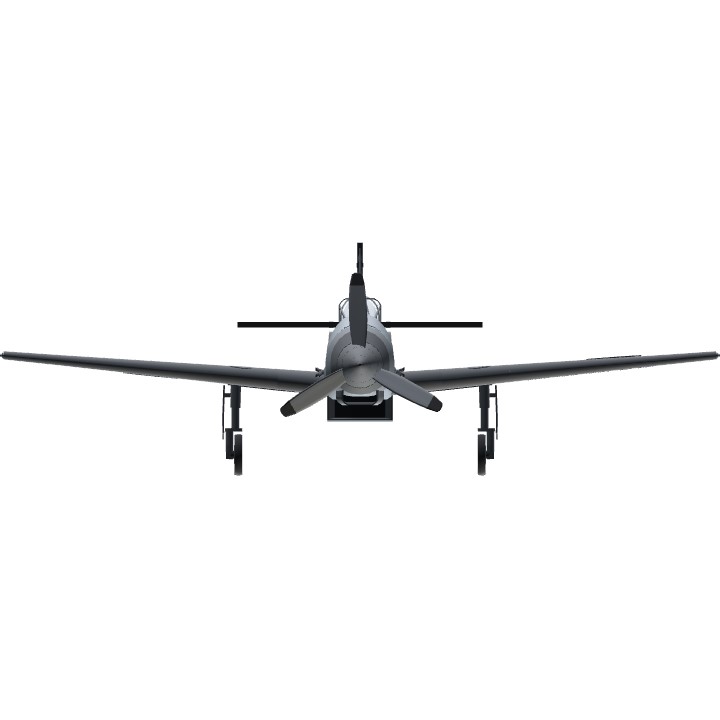
@WagonRestorant its not yet released yet.
What is the yellow plane on the second picture?
The title contains 5 languages.
first updoot 10/10